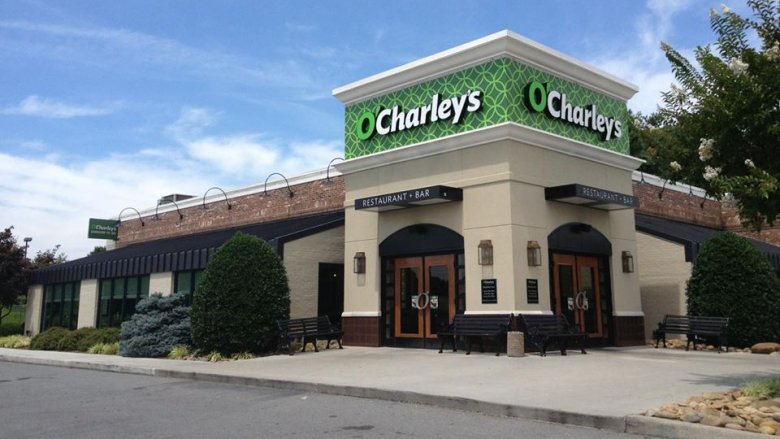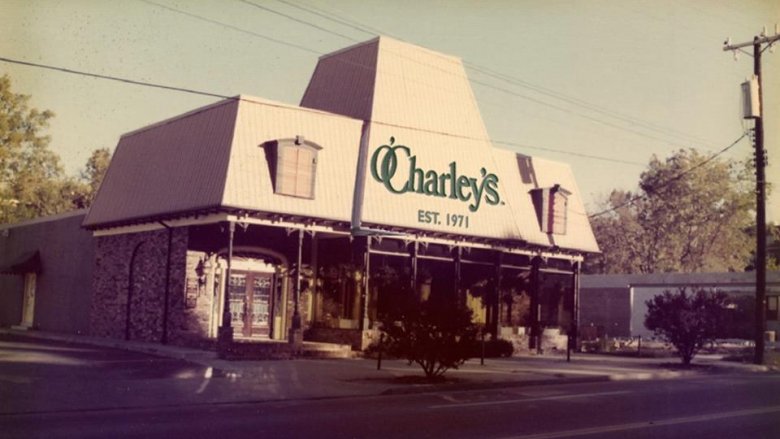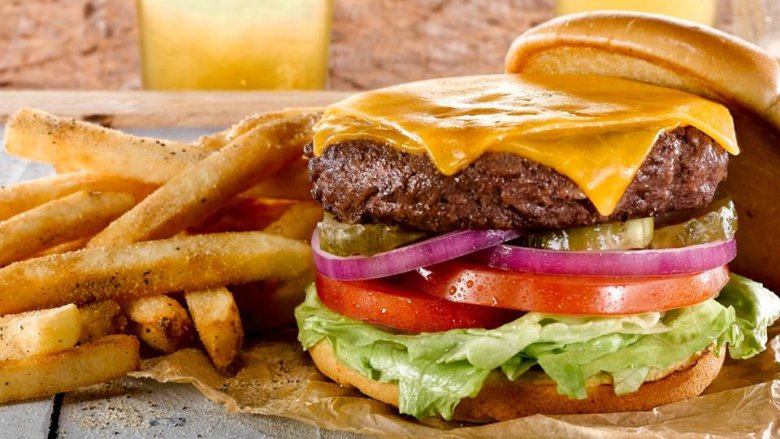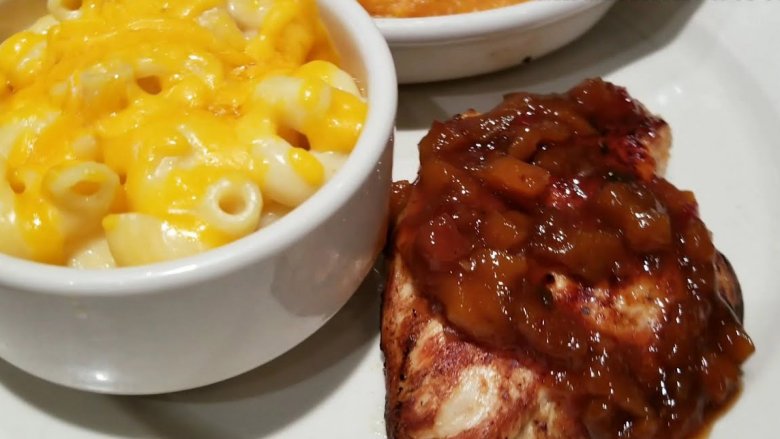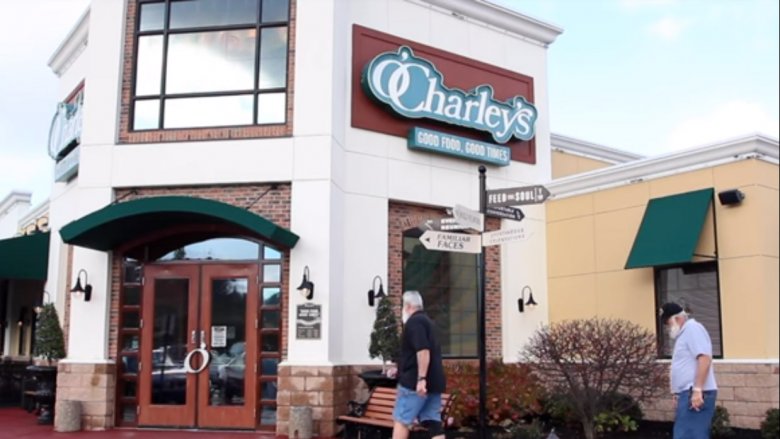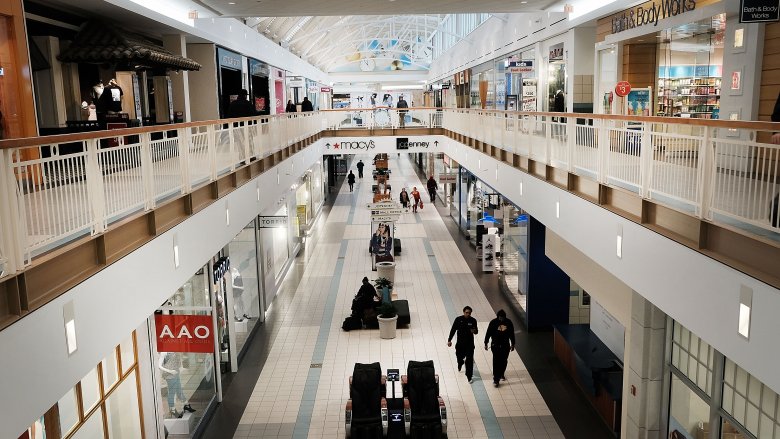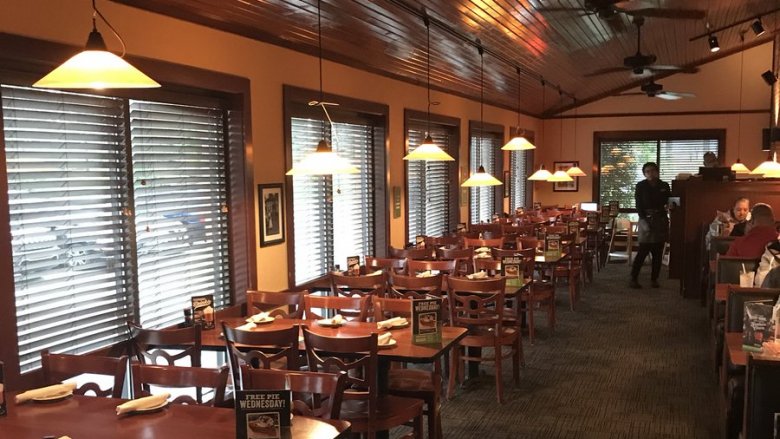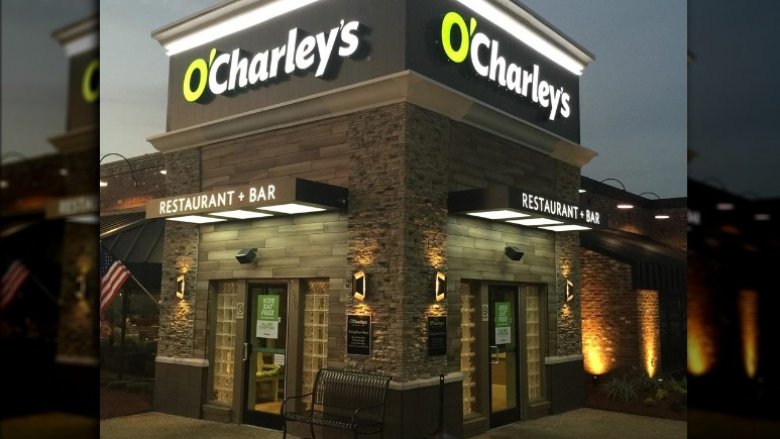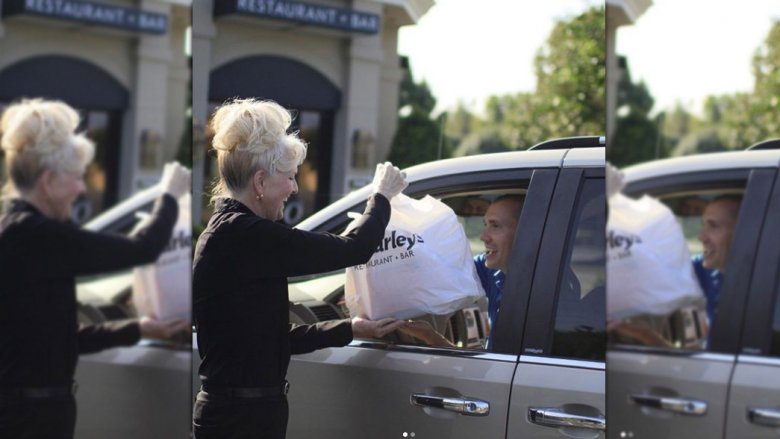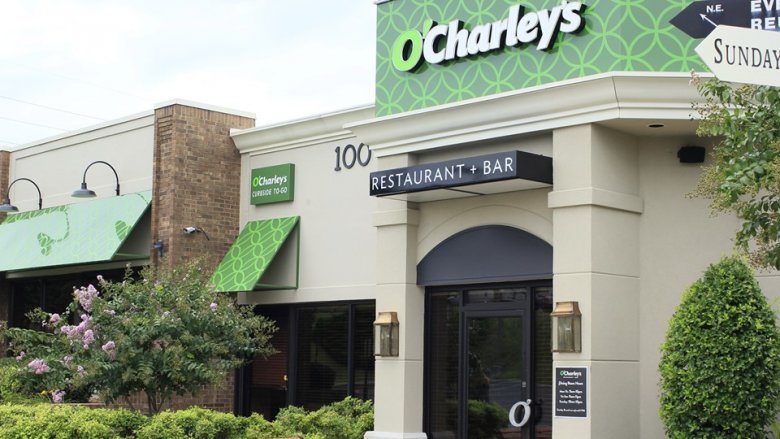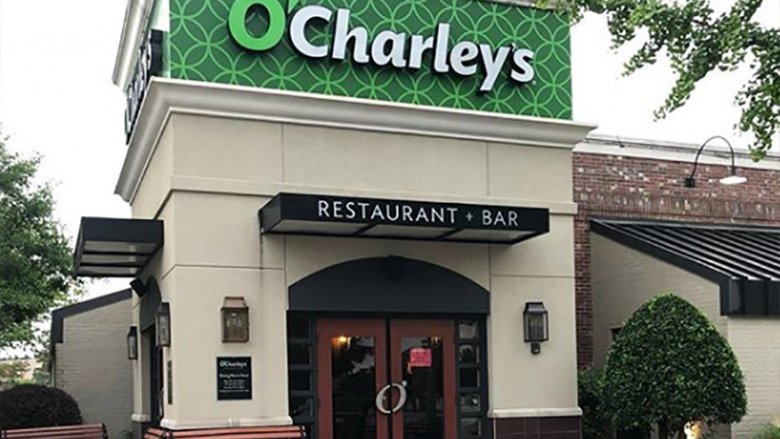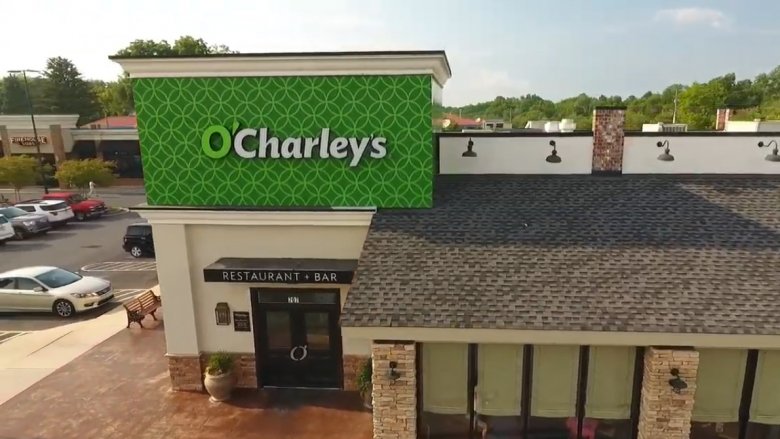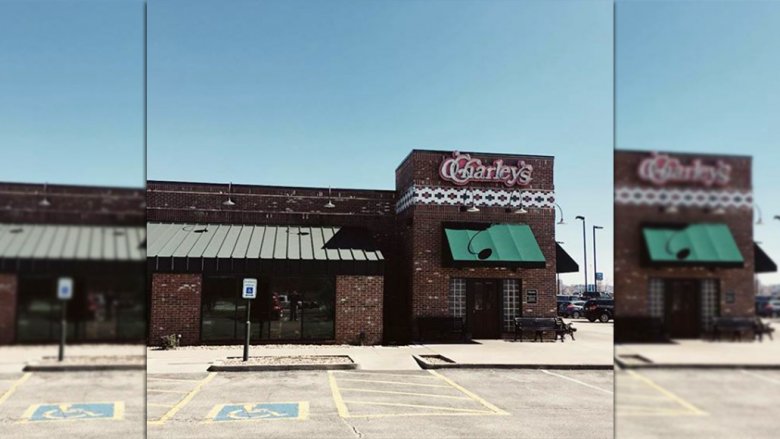The Real Reason O'Charley's Is Closing Restaurants
For over 40 years, O'Charley's has been drawing patrons into its doors with promises of fresh baked rolls and classic American food with a Southern flair. The company, which has its roots in Nashville, Tennessee has spread throughout the South and Midwest with over 200 restaurants operating today.
Recently though, O'Charley's is garnering more attention for its business struggles than its food. Since 2016, at least 20 locations have closed with eight O'Charley's restaurants calling it quits in June 2019 alone. Sales have been down with the brand for several years now and if things don't change, more restaurant closings are sure to follow.
O'Charley's corporate office has been pretty quiet as for the reasons of the latest closures, but there's likely a lengthy list of culprits. From changing shifts in consumer dining habits, to lackluster food and health scares, here are all the reasons your local O'Charley's might be closing any day now.
People are growing tired of O'Charley's bar and grill concept
The 1970s and '80s were a good time for bar and grill restaurants. Applebee's, Bennigan's, Ruby Tuesday, and of course, O'Charley's all came about around this time and promised a casual dining environment that aimed to be a spot equally appealing for after work drinks with friends or night out with the family. O'Charley's, like several of the similar chains, is struggling and it could be because people have simply moved on from the generic bar and grill chain restaurant.
"A lot of these concepts have been around a long time," Janet Lowder, president of the consulting firm Restaurant Management Services, told the Los Angeles Times. "They really need to update. It's a segment of the industry that needs to have some new strategies."
According to Restaurant Business, the chain bar and grill concept is the sector of the restaurant industry that's struggling the most. For at least a decade, consumers have slowly begun to shift away from these bar and grill chains, instead, people are opting for either independent restaurants or more specialty dining concepts.
O'Charley's has had a hard time standing out from similar chains
It doesn't help matters that many of these bar and grill chains lack any real identity that separates them from the one another. From Bennigan's, to Ruby Tuesday, and O'Charley's, the menus could practically be switched out and people probably wouldn't notice. Burgers, chicken tenders, a few steak and pasta dishes are all staples that might not always work as an advantage. "Part of what made them great a decade or two ago was their familiarity — you knew what it was and what you were getting," Victor Fernandez, of TDn2K, a restaurant industry tracking firm, told the Los Angeles Times. "Now, in some cases, that's what people want to avoid."
Even how these chains advertise often seems to blend together. A decade ago, Applebee's and Chili's both tried rolling out commercials with talking logos. O'Charley's attempted to remind customers that they had fresh rolls. Industry experts at the time weren't convinced any of the marketing tactics would help O'Charley's stand out from other brands.
Ultimately, their predictions were right and O'Charley's saw their sales decline in 2010 with numerous restaurants closing in the years that followed.
The food at O'Charley's fails to impress
It's pretty much a guarantee that if a restaurant's food isn't very good, it's going to struggle to stay competitive in the market. The quality of O'Charley's food is obviously subjective to each person's own taste, but restaurant reviews that don't paint the food in a positive light aren't doing the restaurant's business any favors.
Serious Eats visited O'Charley's in 2012 and right away took issue with the restaurant's O'Charley's Grillers. It's never a good thing when sliders are described as "shrunken pucks of beef" that have been cooked "way past well done." Other reviews of O'Charley's Southern food offerings haven't been much kinder, either. The cajun chicken pasta has been called out as "nearly inedible" and the fried shrimp was described as "pieces of rubber covered in panko crumbs."
To be fair, both of those reviews were before O'Charley's rolled out their new menu in 2014. So how does the current state of O'Charley's food stack up? Well, one reviewer did give them props for their decadent desserts in 2018. Then again, other recent reviewers have taken issues with the food such as undercooked fish and chicken. On the flip side, some reviews have also taken issue with the chicken for being too overcooked.
Perhaps it's best to skip the chicken... or just skip O'Charley's.
O'Charley's never garnered the same devotion as other Southern chains
When a restaurant chain becomes so popular that it begins to develop its own devoted fan following, it's truly doing something right. People line up in droves for new restaurant openings and defend it against dismissive food critics. Waffle House and Cracker Barrel are two Southern restaurant chains that have carved out a special niche in the world of chain restaurants and built up a legion of devoted fans. O'Charley's, however, is a long way off from being called a "cultural icon" or the "heart of America."
O'Charley's has certainly tried to create the welcoming atmosphere that a restaurant like Cracker Barrel does so well, but building an actual personality for a restaurant is tricky. While visiting an O'Charley's for Serious Eats, writer Todd Brock noted that while signs promised "Spontaneous Celebrations" it all simply felt too generic and reminded him of an Onion headline poking fun at chain restaurants.
O'Charley's calls itself a restaurant with "Southern roots" but the rest of the country seems to be clueless to that fact. Numerous articles on the internet list the best Southern restaurant chains and the one thing they all have in common is the absence of O'Charley's.
The decline of shopping malls isn't helping O'Charley's
Back in the glory days of retail shopping before big bad Amazon came along, people flocked to shopping malls to spend their cash before heading off to any number of chain restaurants. Chain restaurants like O'Charley's, and their similar ilk, benefited from the constant influx of shoppers who would depart from the mall and go looking for the closest casual dining restaurant. Those days are over.
With the rise of internet shopping, more malls are closing up or grappling with dwindling shoppers and it's having a serious effect on the eateries that depend on them for dine-in traffic. Malcolm Knapp, who tracks restaurant trends, said the consumers who do their shopping online are also ordering their food online as well. "They can go home, get UberEats and get any entertainment they want [via streaming] any time they want it," Knapp explained. The shopping mall and area restaurants like O'Charley's just don't factor into that equation. Though they may offer delivery services, their locations close to shopping areas no longer get bonuses for convenience.
When Macon, Georgia lost its O'Charley's in 2018 after 20 years of business, longtime employee Shalee Horton knew it was related to the shopping mall's troubles. "Back when it was booming, we were booming," Horton said. "The mall started to decline and you know, so did we."
Pricey renovations may have yielded only short-term gains for O'Charley's
Upgrading a restaurant's look is one way of getting customers to pause and take another look at a brand they're already familiar with. While this can certainly work, it can also be a very pricey move where the influx of customers through the door may not balance out the cost of the renovations.
In 2012, O'Charley's announced that they would be giving their restaurants a face-lift that was going to set them back around $40 million to complete the nationwide upgrade. The cost was expected to be between $200,000 and $250,000 per restaurant with each location featuring the new logo and signature rooms dubbed "The Porch," "The Piedmont," and "The Charles." Oooh, fancy!
Pretty quickly, O'Charley's was calling the upgrades a winning decision with the chain showcasing one location that saw a 20 percent jump in customers. That's certainly nothing to scoff at, but then again, that was just one of the early renovations. How well those renovations fueled sales in the long-term though is debatable. Just a few years later, the chain was still grappling with underperforming restaurants with the restaurant's parent company still looking for what they called the "right monetization path." That's business talk for "our sales are slipping year after year and we're not sure how to fix it."
O'Charley's parent company is going through a bit of a shakeup
O'Charley's is owned by American Blue Ribbon Holdings and because business is complex, American Blue Ribbon Holdings is owned by Fidelity National Financial. So what's this have to do with your local O'Charley's restaurant?
Well, American Blue Ribbon Holdings is being split in two because the old business structure simply wasn't working well and ABRH was burdened with $124 million of debt. If Fidelity's spin-off company, Cannae, can get O'Charley's back to being a growing money maker, they might be able to sell it as a profitable business. A profitable business would, of course, increase the chances of your local O'Charley's not shutting down. Then again, if O'Charley's isn't able to show signs of overall sales growth, more locations will continue to close.
The restaurant industry is full of stories of chain restaurants that were traded by larger companies and later floundered into the abyss. This business shakeup could ultimately be what gets O'Charley's on the right track, but on the other hand, it could be the hammer that drives the final nail into their coffin.
O'Charley's has been hit by some serious lawsuits
Any large company is likely going to have the occasional lawsuit come their way. Sometimes they get dismissed, but other times they can cost the business millions and erode customer confidence. O'Charley's has dealt with its fair share of lawsuits regarding everything from customer safety to unfair employee pay.
The one thing nobody ever wants baked into their chicken pot pie is a shard of glass. In 2014, Robert Farroll and his wife were eating at a Mobile, Alabama O'Charley's when he swallowed a small shard of glass that was in his pot pie. Farroll required surgery to remove it from his small intestine. Not surprisingly this resulted in a lawsuit and O'Charley's was ordered to pay $1.6 million.
O'Charley's has also found itself wrapped up in a lawsuit with other chain restaurants regarding unfair pay to servers for their labor. O'Charley's parent company, American Blue Ribbon Holdings, found itself lumped in with six other defendants in 2018 who were being sued by 14 plaintiffs who argued they were not paid a federal minimum wage while doing tasks that didn't allow for gratuity.
Not only does this sort of lawsuit give the public the impression that O'Charley's doesn't fairly pay its staff, but a ruling in the employee's favor impacts the business' bottom line. A restaurant that's already treading water to stay afloat could easily find itself underwater by the damages of employee back wages.
Locations in the O'Charley's own backyard have been closing left and right
It's not uncommon for a restaurant chain to expand outside their home turf and find that success eludes them in a new territory. Just ask Pollo Tropical or Chi-Chi's how expanding into new regions worked out for them. (Hint, it wasn't a grand slam.) It's a sure sign that trouble is really on the horizon with a restaurant chain though when it's closing locations on its own home turf. After all, if you can't win the local folks over, what hope is there for potential customers on the other side of the country?
O'Charley's is still based today, in Nashville, Tennessee, however, it seems to be losing locations right under its nose. In late 2018, the chain closed locations in Spring Hill and Brentwood, Tennessee, and while no reason was given for the closures, more were destined to follow.
Just two months later, O'Charley's closed another Middle Tennessee location in the Nashville suburb of Hendersonville. That closure was chalked up to a failure to keep up with the competition. And finally, O'Charley's pulled the plug on its location in Murfreesboro, Tennessee in March of 2019 after 33 years of business because of a geographical shift in the city's dining business. In case you're counting, that's four locations in O'Charley's own backyard that have bit the dust in less than a year.
A data breach at O'Charley's didn't help customer confidence
In today's tech-dominated society, cyber crime is becoming more common than ever. The last thing people want from a casual dining chain they're familiar with is an unwanted surprise in the form of a data breach. In 2016, news broke that patrons who had dined at O'Charley's between March 18 and April 8 were possibly subject to a data breach of their debit/credit card information. O'Charley's first learned of the data breach on April 8, but patrons didn't learn of it until over a month later. Uh oh.
Out of the company's 221 restaurants, a mere three escaped unscathed by the cyber criminals. O'Charley's cautioned customers on their website to take steps to monitor their financial situation, but nonetheless, some customers were still bothered they didn't learn about it sooner. "I understand to some degree that we're in an age where stuff like that is happening more and more, but I feel kind of caught off guard that I wasn't contacted," Robert Coley, a regular customer at O'Charley's Lynchburg, Virginia location, said.
It's not the kind of thing that makes people want to rush back — no matter how good the rolls are.
Multiple O'Charley's locations have had health issues
Above all else, when people choose to dine in a restaurant, they expect a meal that has been prepared safely in sanitary conditions. When a restaurant drops the ball in that department, people tend to notice and are likely not to go back. Several O'Charley's restaurants in recent years have had serious health violations and it's undoubtedly had a negative impact on their business.
In December 2017, the Macon County Health Department forced an O'Charley's in Forsyth, Illinois to temporarily close its doors after the restaurant received a dismal score of 56. This particular O'Charley's was cited for dirty shelves, expired ham, and fish juice dripping onto a box of meat. Yuck.
As concerning as dripping fish juice is, unwanted pests in a kitchen can really turn people off. In 2018, an O'Charley's in Owensboro, Kentucky was hit with a "C" health rating for a roach infestation. The restaurant did clean up the issue and get their grade bumped to an "A," but some people were still unsatisfied. "I won't be going back there anymore," said Denny Milam Sr.
In May of 2018, customers of O'Charley's in Barboursville, West Virginia learned that an employee of the restaurant had been diagnosed with Hepatitis A. To O'Charley's credit, they did alert the health department as soon as they found out about the issue, however, such incidents tend to stick in the minds of customers.
People are opting for dining options other than O'Charley's
Quite possibly the biggest culprit in O'Charley's restaurant woes is the cold hard truth that people are simply looking for other dining options than casual dining chain restaurants. O'Charley's has been grappling with a loss in sales because of this for close to a decade now, and times likely aren't changing for the better anytime soon.
Whereas consumers at the beginning of the 2010s were still feeling the pinch on their wallet from the 2008 recession, a strong economy is giving more people the confidence to eat out more. However, everything from independent restaurants to fast casual and delivery apps like Grubhub are impacting O'Charley's dine-in customers.
In order to cope with this, many casual dining chains are opting to raise menu prices in order to balance out the lower foot traffic and rising labor costs. While this could certainly help with a bump in sales, those higher prices on the menu could easily come back to bite a restaurant when the next recession hits. If O'Charley's can't find a long-term way to adapt to the change of customer dining habits it's troubles will only get worse.
